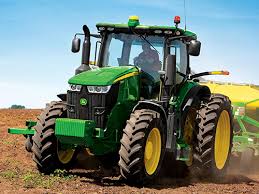Agricultural tractors are essential for modern farming. They help with plowing, planting, harvesting, and other critical tasks. To keep your tractor working efficiently, it is important to maintain its parts regularly. Taking care of your agricultural tractor parts can save you time, money, and prevent unexpected breakdowns. Here are some simple, practical tips to extend the life of your tractor parts and keep your machine running smoothly.
1. Regular Cleaning and Inspection
One of the easiest ways to extend the life of agricultural tractor parts is to keep them clean and check them regularly.
| Part | Cleaning Frequency | Inspection Tips |
|---|---|---|
| Engine Filters | Every 50 hours of use | Check for clogs and replace if dirty |
| Tires | Weekly | Look for cracks, low pressure, or wear |
| Hydraulic System | Monthly | Inspect for leaks and proper fluid level |
| Battery | Every 3 months | Clean terminals and check charge |
Dust, dirt, and debris can build up over time and cause wear. Regular cleaning prevents blockages and helps you spot minor problems before they become major issues.
2. Use Quality Replacement Parts
When it’s time to replace worn-out parts, always choose high-quality replacements. Cheap or poorly-made parts can wear out quickly and may not fit properly. Investing in good agricultural tractor parts ensures better performance and durability.
When buying replacement parts:
- Ensure they match the manufacturer’s specifications.
- Purchase from trusted suppliers.
- Avoid second-hand parts unless you know their condition.
3. Keep Fluids at the Right Level
Fluids play a critical role in keeping your tractor’s parts working smoothly. Check and top up essential fluids regularly.
| Fluid Type | Check Frequency | Purpose |
| Engine Oil | Every 100 hours | Lubricates engine and reduces friction |
| Hydraulic Fluid | Monthly | Powers the hydraulic system |
| Coolant | Every 50 hours | Prevents overheating |
| Transmission Fluid | Every 300 hours | Ensures smooth gear shifting |
Low fluid levels or dirty fluids can cause damage. Always use the correct fluid type recommended by the manufacturer.
4. Store Your Tractor Properly
Proper storage can protect agricultural tractor parts from damage. When your tractor is not in use:
- Keep it in a clean, dry, and sheltered place.
- Cover it to protect it from dust and weather.
- Disconnect the battery during long storage periods to avoid drainage.
Avoid leaving the tractor exposed to rain, sun, or extreme temperatures, as these conditions can cause parts to rust or deteriorate.
5. Follow the Maintenance Schedule
Each tractor comes with a maintenance schedule provided by the manufacturer. Following this schedule helps you keep track of when to check or replace parts.
Important maintenance tasks include:
- Oil Changes: Follow the recommended intervals.
- Filter Replacements: Change air, oil, and fuel filters regularly.
- Greasing Moving Parts: Lubricate joints and bearings to reduce wear.
By sticking to the maintenance schedule, you ensure your tractor performs reliably for years.
6. Monitor Tire Condition
Tires are one of the most used agricultural tractor parts. Proper care of the tires improves performance and safety.
- Keep tires properly inflated to prevent uneven wear.
- Avoid overloading the tractor.
- Inspect for punctures or cracks regularly.
Driving with underinflated or damaged tires can lead to costly replacements and reduce fuel efficiency.
7. Pay Attention to Warning Signs
Tractors often give warning signs before major breakdowns occur. Ignoring these signs can lead to more severe problems. Common warning signs include:
| Sign | Possible Issue |
| Unusual noises | Loose or worn-out parts |
| Loss of power | Clogged filters or engine problems |
| Leaking fluids | Faulty seals or cracked hoses |
| Hard starting | Battery, fuel system, or ignition issues |
When you notice these signs, address them immediately to prevent further damage.
8. Train Operators Properly
Improper use of a tractor can lead to faster wear and tear. Ensure that anyone operating the tractor understands how to handle it safely and efficiently.
- Teach proper starting and shutting down procedures.
- Avoid harsh braking and abrupt gear changes.
- Limit operation in extreme weather when possible.
Proper training not only protects the tractor but also ensures the safety of the operator.
Final Thoughts
Maintaining agricultural tractor parts doesn’t have to be complicated. By cleaning regularly, using quality replacements, keeping fluids at the right levels, and following a maintenance schedule, you can keep your tractor running well for years.
Pay attention to warning signs, store your tractor properly, and ensure all operators are trained correctly. These simple steps can save you time, money, and keep your farming operations running smoothly.
A well-maintained tractor is a reliable partner on the farm—treat it right, and it will work hard for you in return.





